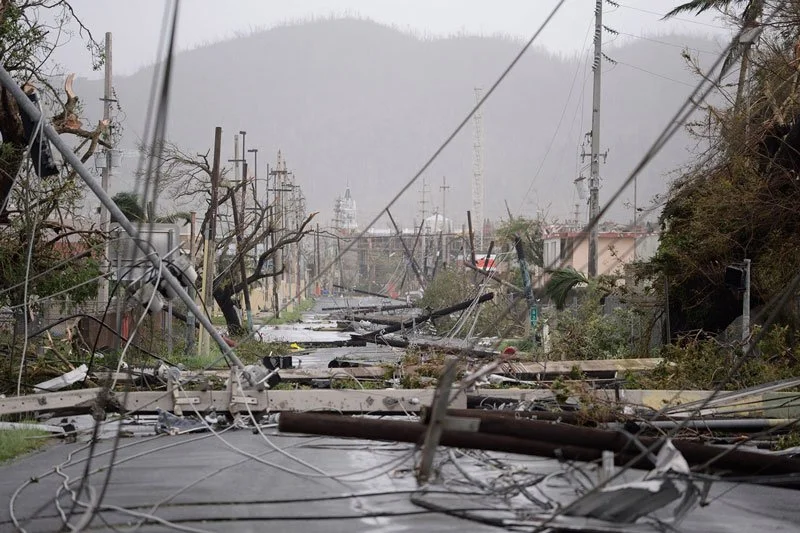The Critical Role of Architects in Post-Disaster Reconstruction
Written By Ricardo Álvarez-DíazABOUT THE AUTHOR | Ricardo Álvarez-Díaz is the founder and principal of the architectural firm Álvarez-Díaz & Villalón, with offices in Miami and San Juan, Puerto Rico.
Natural disasters are catastrophic events that cause loss of life, extensive property damage and environmental degradation.
Coming back from such devastation is extremely challenging. Events like Hurricanes Maria and Irma demand we put aside our differences and usual functions to do whatever it takes to help each other and recover as soon as possible.
Disasters like these remind us of our roles as human beings and citizens. But what is our role as architects? How can we help?
POST-DISASTER RECONSTRUCTION
Post-disaster reconstruction involves more than the rebuilding of damaged and destroyed structures and entire towns. It is an opportunity to create new designs and use improved construction techniques and materials to build stronger and sustainable structures.
As in any other architectural project, post-disaster reconstruction revolves around the needs of the occupants and users of the built environments, as well as the needs of the communities and cities decimated by disaster. It requires us to take into account cultural, social and environmental contexts.
REBUILDING RESILIENT CITIES
More than half of the world's population lives in urban areas. According to the United Nation's Department of Economic and Social Affairs, that figure is expected to grow to 66 percent by 2050. Given the overcrowding and poverty in most cities, architects should design built environments that reduce risk and mitigate damages related to natural and man-made disasters.
We need to use this opportunity to develop adequate, sustainable and resilient professionally-designed housing to bounce back from these catastrophic events. Temporary shelters are meant to be that, temporary. Yet many urban and rural communities endure years of inadequate housing in emergency shelters after a disaster. In Haiti, for example, people are still living in tents and other emergency shelters after the 2010 earthquake. When used as permanent housing, temporary shelters often turn into slums.
One way to expedite the post-disaster reconstruction process is to not depend solely on relief and foreign aid but to also involve local residents, builders, and materials, which also provides a much-needed boost to the local economy.
THE RECONSTRUCTION PROCESS
Recovery usually takes years, especially in urban areas, making it particularly difficult to shelter affected populations during the reconstruction period. To understand the architect's role in the post-disaster reconstruction process, we need to look at the various stages of this process and the problems and potential solutions to be considered.There are two approaches to post-disaster reconstruction: transitional shelter and multi-phased. The transitional shelter approach focuses on upgradable, reusable, relocatable, resalable and recyclable shelter.The multi-phased approach focuses more on time than on quality and comprises three stages:
1. Emergency response:
Immediate shelter such as tents provided from the first week of the emergency to about three weeks.
2. Relief, short-term or mid-term response:
Temporary shelters such as prefabricated units for use during the time between the emergency and the permanent shelters, usually from two months to six months after the disaster.
3. Recovery, permanent solution:
The rebuilding of proper, long-term housing, which can take years.Most architects get involved during the third stage, although they should make significant contributions during all stages of reconstruction.
PERMANENT, SUSTAINABLE HOUSING IS THE KEY TO RECOVERY
In Puerto Rico, it is estimated that more than half of the island’s housing units were built without permits and without the use of an architect or engineer. Building permanent, sustainable housing for the affected population should be a priority for teams charged with reconstruction after catastrophic natural disasters.
Post-disaster housing has to be well-adapted to the area's cultural, social and environmental norms, or it will not work as adequate shelter for that population. We should work closely with communities to understand their way of life, traditions, and priorities.
While designing for post-disaster reconstruction, architects also must consider normal conditions and focus on quality and sustainable solutions, and not just on deadlines. To avoid having to surrender to time constraints while rebuilding, we should develop predisaster reconstruction programs we can implement when disaster strikes.
Amid the numerous negative, undesirable and tragic consequences of natural disasters, we are given a chance to help each other during desperate times and to, together, reconstruct better, stronger built environments and communities for our neighbors who have lost it all.
RESOURCES
FEMA
The Federal Emergency Management Agency's publication, “Planning for Post-Disaster Recovery and Reconstruction” (FEMA 421), introduces community planners to policies for rebuilding and recovery after disasters and provides guidance on how to plan for post-disaster reconstruction. FEMA 421 also guides the development of a natural hazards element as part of a local, general or comprehensive plan.
This document equips planners and others involved in post-disaster reconstruction at all levels of government with the tools needed to create or re-create communities that will withstand natural disasters. Developed in partnership with the American Planning Association, Chapters 3, 4, and 5 are available to download from the FEMA Library. Complete copies may also be ordered through the APA Planners Book Service or by telephone at (312) 786-6344.
American Institute of Architects
The AIA's "Disaster Assistance Handbook," published in March 2017, is a go-to resource for architects, built environments professionals, municipal government officials and emergency managers involved in disaster mitigation, preparation, response, and recovery. Developed by a national team of AIA members and staff, alongside contributions from industry experts and government officials, the handbook is oriented towards using architects’ existing skill set to address different phases of a disaster.
The new handbook shows architects everywhere how they can work with local governments to prepare for and respond to disasters, and how they can help enhance community resilience through individual client projects and participation in broader planning efforts.

